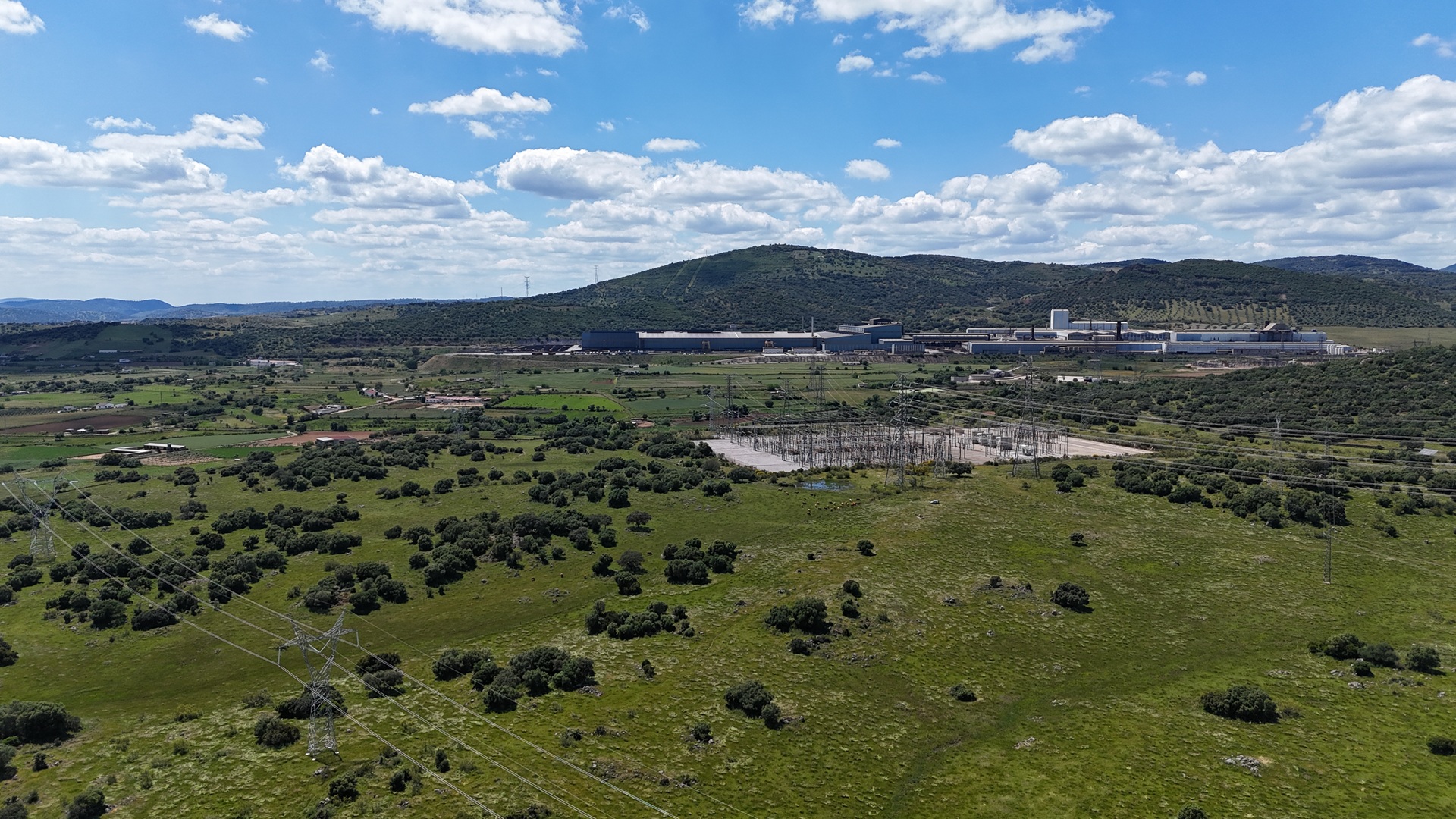CL Grupo Industrial, one of the largest industrial corporations in the country, has started the construction of the El Corchito photovoltaic solar plant, the second largest industrial self-consumption project built to date in Spain. The new solar photovoltaic plant, with an installed capacity of more than 25 megawatts (MWp) – with 35,820 bifacial solar modules of 700 Wp each – and located in the municipality of Jerez de los Caballeros, will be entirely dedicated to supplying energy to Siderúrgica Balboa, one of the key companies in the Group’s Steel Division.
The facility will be built by GES – Global Energy Services – a company specialised in the engineering and construction of renewable energies, also part of the corporation, and will be developed under the EPC (engineering, procurement and construction) formula. The works began on 19 May with the aim of bringing the plant into operation before the end of the year. The total investment foreseen for this new photovoltaic plant is over 14 million euros.
The project, led by CL Grupo Industrial’s Energy Efficiency Department, is a new milestone in the Group’s decarbonisation and vertical integration strategy. This clean and stable source of energy will mean estimated savings of 2.5 million euros per year, reinforcing its long-term competitiveness in a context marked by the volatility of energy prices. ‘The commitment to this project is a clear demonstration of our industrial vision for the future: competitive, sustainable and self-sufficient,’ said Miguel Ángel Leal, CEO of CL Grupo Industrial’s Steel Division. ‘Having renewable energy generated on-site allows us to reinforce the energy independence of our facilities, ensure greater cost stability and make decisive progress in our climate commitments’, he added.
Synergies driven by CL Grupo Industrial’s corporate model
The new solar plant is also an example of the synergies enabled by CL Grupo Industrial’s corporate model, with the active collaboration of three Group companies in its development. From design to technical execution and equipment supply, the project reflects the corporation’s ability to coordinate internal resources and offer advanced energy solutions within its own industrial ecosystem.
GES will be responsible for the entire technical execution of the plant, including the design and procurement of the main equipment as well as the civil and electrical works and the direct connection to Siderurgica Balboa’s power bar. The new self-consumption plant will not be connected to the grid, as 100% of the energy produced will be destined to the self-consumption of the steelworks.
In addition, and thanks to this infrastructure, Siderurgica Balboa will be able to generate around 10% of its annual energy consumption through solar energy, with a utilisation rate of 90% of the plant’s production.
‘The project is the perfect example of how we design tailor-made solutions to maximise the energy efficiency of all our companies within the Group itself,’ explained David Aguilera, Director of Energy Efficiency at CL Grupo Industrial. ‘It is also a demonstration of the synergies that our corporate model allows us, in which different companies of the Group collaborate with a common goal’, he added.
This project is part of CL Grupo Industrial’s 2025-2027 strategic plan, which involves major investments in sustainability and energy efficiency in all its divisions.
The construction of the El Corchito solar photovoltaic plant, part of the project “Towards a sustainable and competitive steel industry: Strategy for decarbonisation in Balboa”, receives funding from the NextGenerationEU Recovery, Transformation and Resilience Plan financed by the European Union and managed by the Spanish Ministry of Industry and Tourism.
Commitment to biodiversity
In line with its commitment to the environment, the project has been designed to minimise environmental impact and contribute to the preservation of local biodiversity. Among the measures included are the installation of shelters for reptiles, nests for the lesser kestrel and bats, as well as ponds to encourage the presence of the black stork, a protected species in the area.The plant will also have hunting fences and other actions focused on the protection of fauna throughout the life cycle of the facility.

